
Olympics Technology Collection
A series of web apps that utilize Intel's 3D Athlete Tracking to inform users of their fitness level in different contexts.
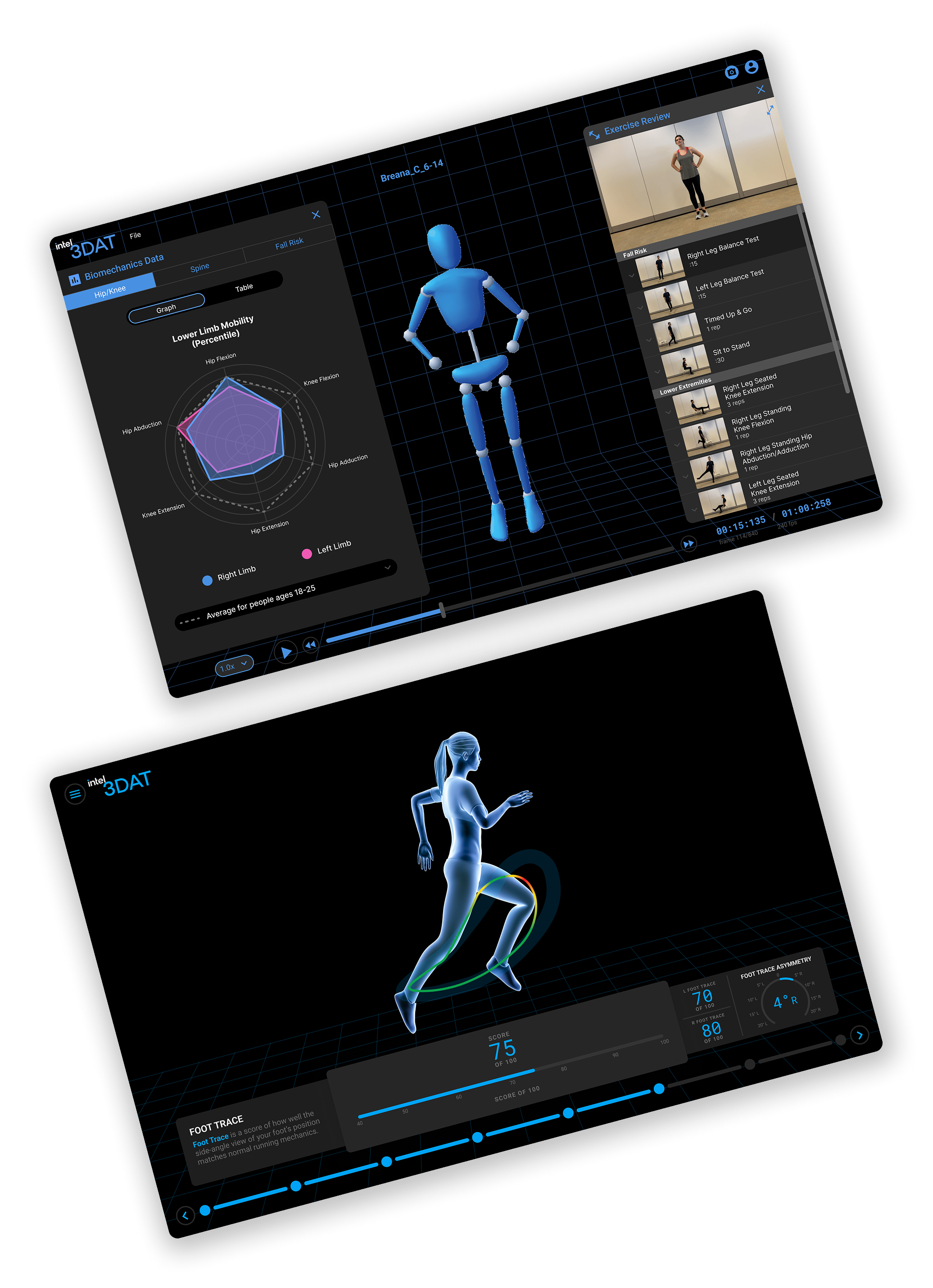
🖼️ Background
Throughout my co-op with Intel’s Olympics Technology Group (OTG), which was during the 2022 Beijing Winter Olympics, I worked on
designing innovative technology that leveraged Intel’s 3DAT (3D Athlete Tracking) system to analyze athletic performance. As the
largest sponsor of the Olympics, Intel invested heavily in cutting-edge sports technology, and OTG was responsible for developing
new applications that could potentially be adopted by stakeholders. Over seven months, I designed six web applications, each powered
by 3DAT data, and presented them to stakeholders while collaborating closely with contracted developers to bring them to life.
OTG was a small sector within Intel, and the UI/UX Design co-op, who was replaced every 6 months, was the sole designer on the team.
This experience, while initially intimidating as only my second internship, became transformative for my design approach. In this
position, I quickly recognized that my initial lack of sports technology expertise was actually an advantage. It positioned me to
bridge the gap between complex performance data and intuitive user experiences—making sophisticated athletic metrics accessible to
average users. This challenge of translating specialized data into understandable insights helped me develop a passion for fitness
technology while teaching me to leverage my outsider perspective as a design strength rather than a limitation.
🔄 Process
During my seven-month co-op with Intel's Olympics Technology Group, I worked exclusively with their groundbreaking 3D Athlete Tracking
(3DAT) system to design six web applications that translated complex athletic performance data into intuitive user experiences. As the
sole designer on a specialized team, I quickly adapted to the fast-paced environment, dedicating approximately one month to each
application after initial onboarding.
Each application followed a structured yet agile design process that balanced technical innovation with user accessibility:
Team Collaboration
I worked within a focused four-person subteam that included:
A product manager who established direction, timelines, and narrative.
A product engineer with biomechanics expertise.
Myself as the UI/UX design co-op responsible for all prototypes.
A biomechanics co-op supporting 3DAT software development.
Concept Development
The process began with the product manager presenting a concept and narrative (e.g., a 3DAT-powered golf swing analysis tool for professional athletes). During initial meetings, we collaboratively brainstormed potential features that would fulfill both technical capabilities and user needs.
Individual Ideation to Collective Design
Following concept introduction, each team member—regardless of role—created individual sketches and ideas for the application's functionality and appearance. This multidisciplinary approach ensured diverse perspectives informed the design from the earliest stages.
Collaborative Refinement
In follow-up meetings, we presented our individual concepts and identified the most compelling features from each. During these sessions, I took detailed notes while asking clarifying questions about biomechanics fundamentals to ensure data visualization would be both accurate and accessible.
Iterative Wireframing
I synthesized the team's input into wireframes that integrated preferred features and addressed technical requirements. These wireframes underwent multiple iterations based on team feedback, with particular focus on transforming complex athletic data into intuitive visual presentations.
High-Fidelity Prototyping
The finalized wireframes evolved into high-fidelity prototypes through continuous refinement. I presented progress updates every few days to gather feedback and ensure alignment with project goals.
Development Handoff and Stakeholder Presentations
Once prototypes reached completion, I presented them to contracted developers with emphasis on functionality and implementation
requirements. I maintained communication throughout development to ensure design integrity.
Simultaneously, I delivered presentations to stakeholders during larger meetings. These presentations focused on narrative and
value proposition, directly influencing investment decisions for each project.
This systematic yet flexible approach allowed me to successfully design six specialized applications within tight timeframes
while ensuring they effectively translated complex athletic data into accessible insights for targeted users.
🎨 Design
Below are descriptions and images/videos of the 6 web apps I designed during my co-op with Intel's Olympics Technology Group in the order
I made them.
📷 STREAM
STREAM is a web app used to capture videos from multiple cameras at once intended to be used for 3DAT. The app displays as few as one and as many as eight live camera feeds in a grid and allows the user to toggle activation of each camera, adjust camera settings for each camera, and get feedback on network connectivity and dropped frames for each camera.
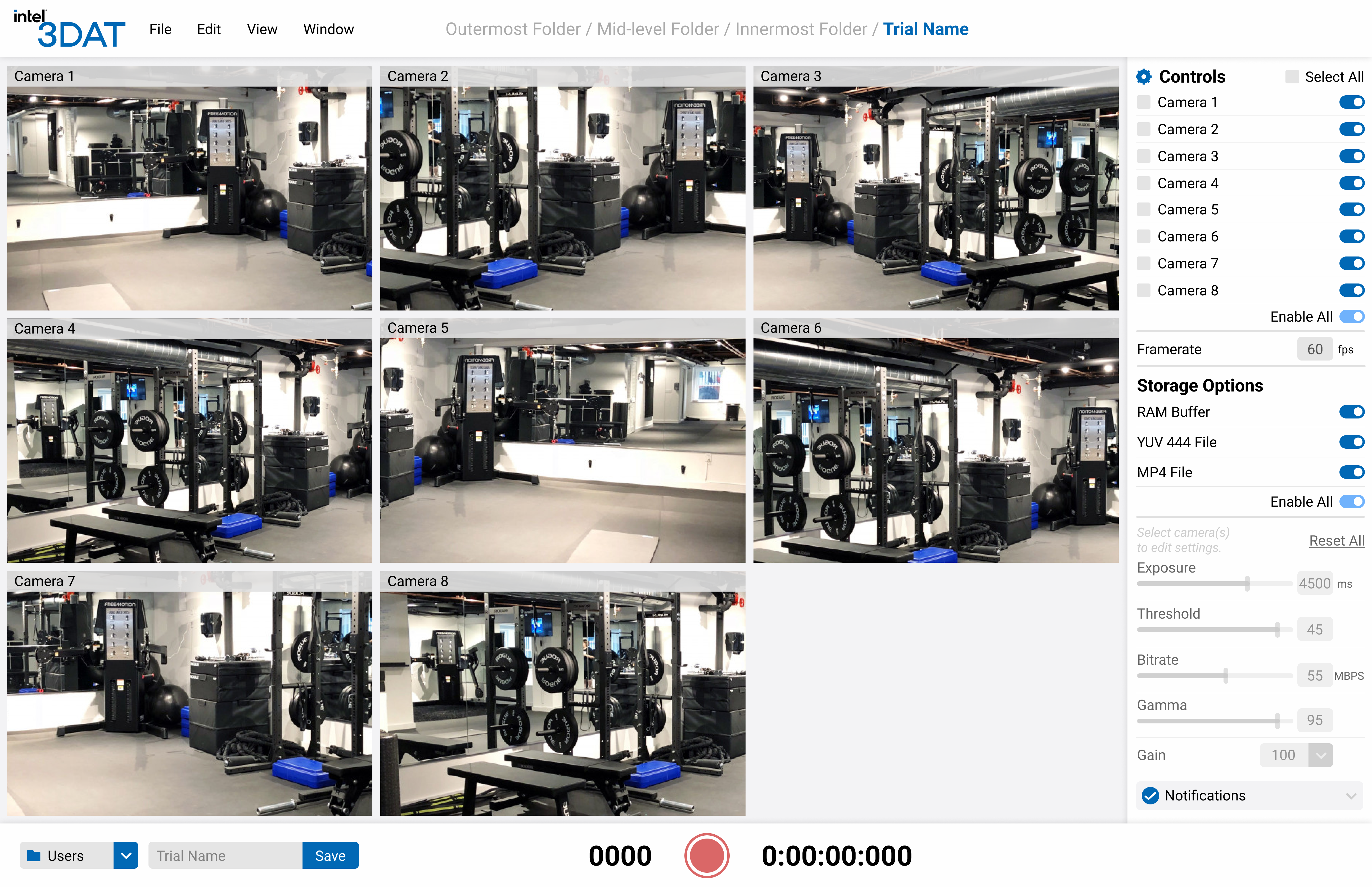
Dashboard showing 8 cameras enabled.
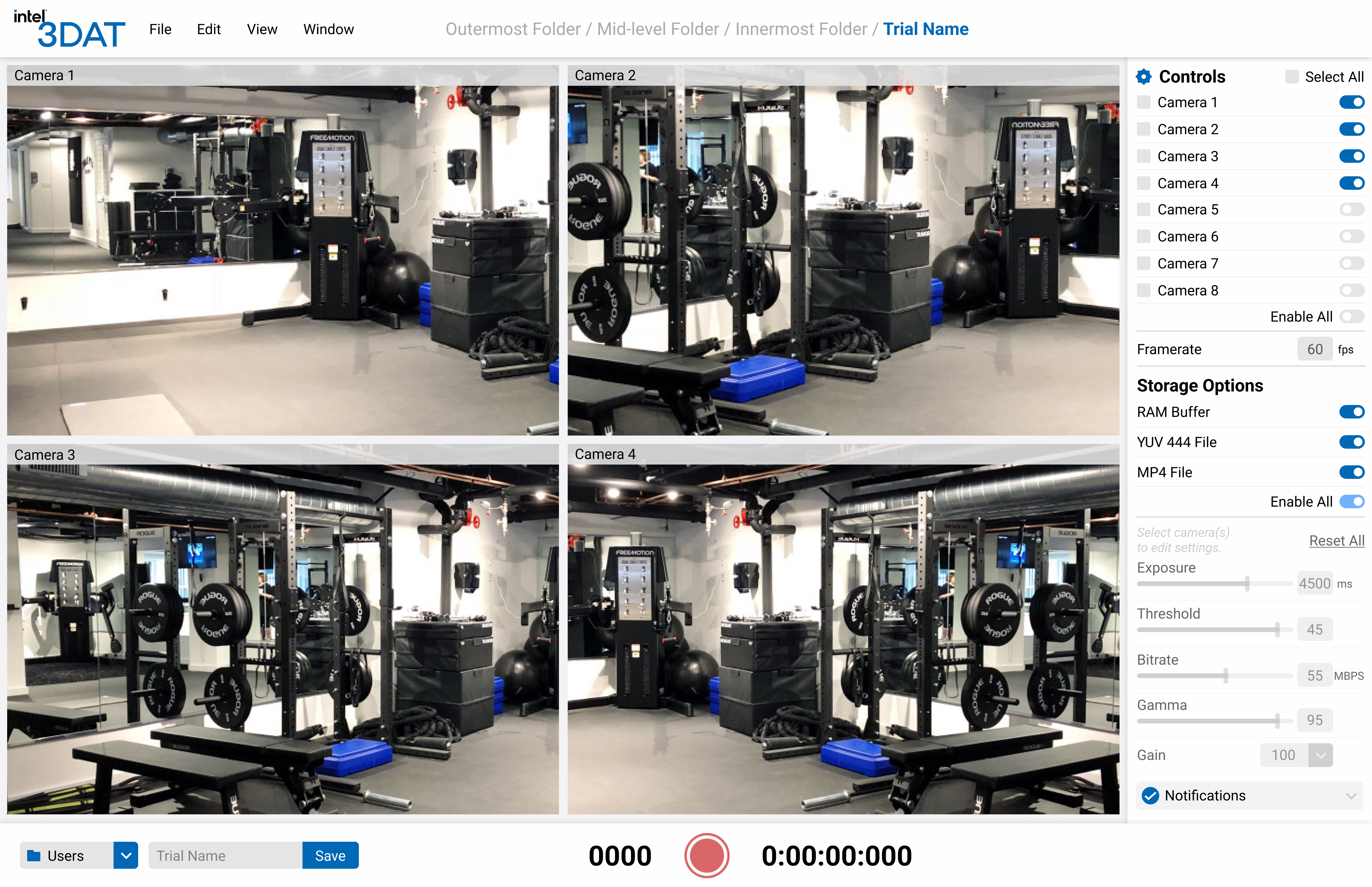
Dashboard showing 4 cameras enabled.
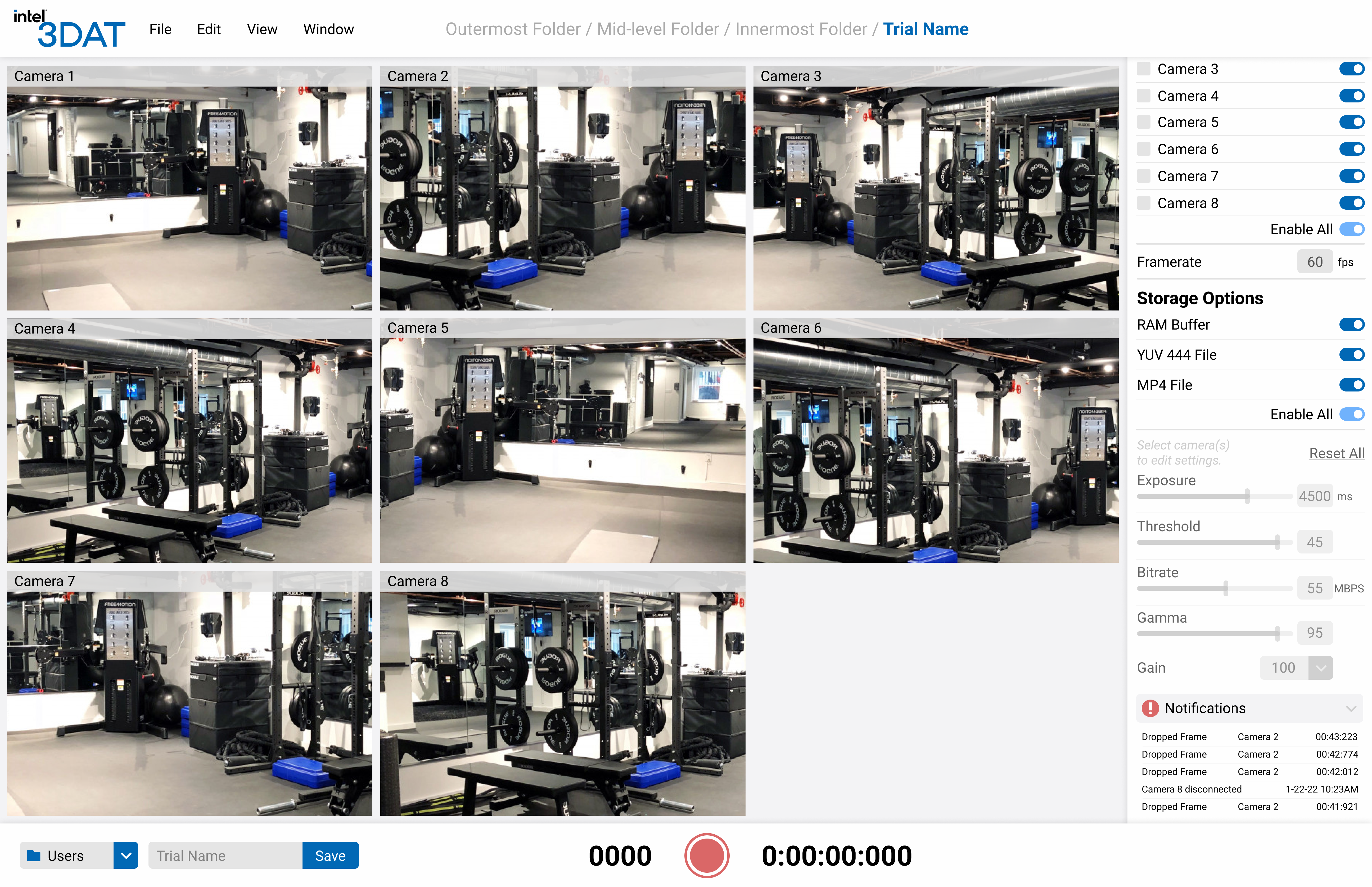
Status notifications.
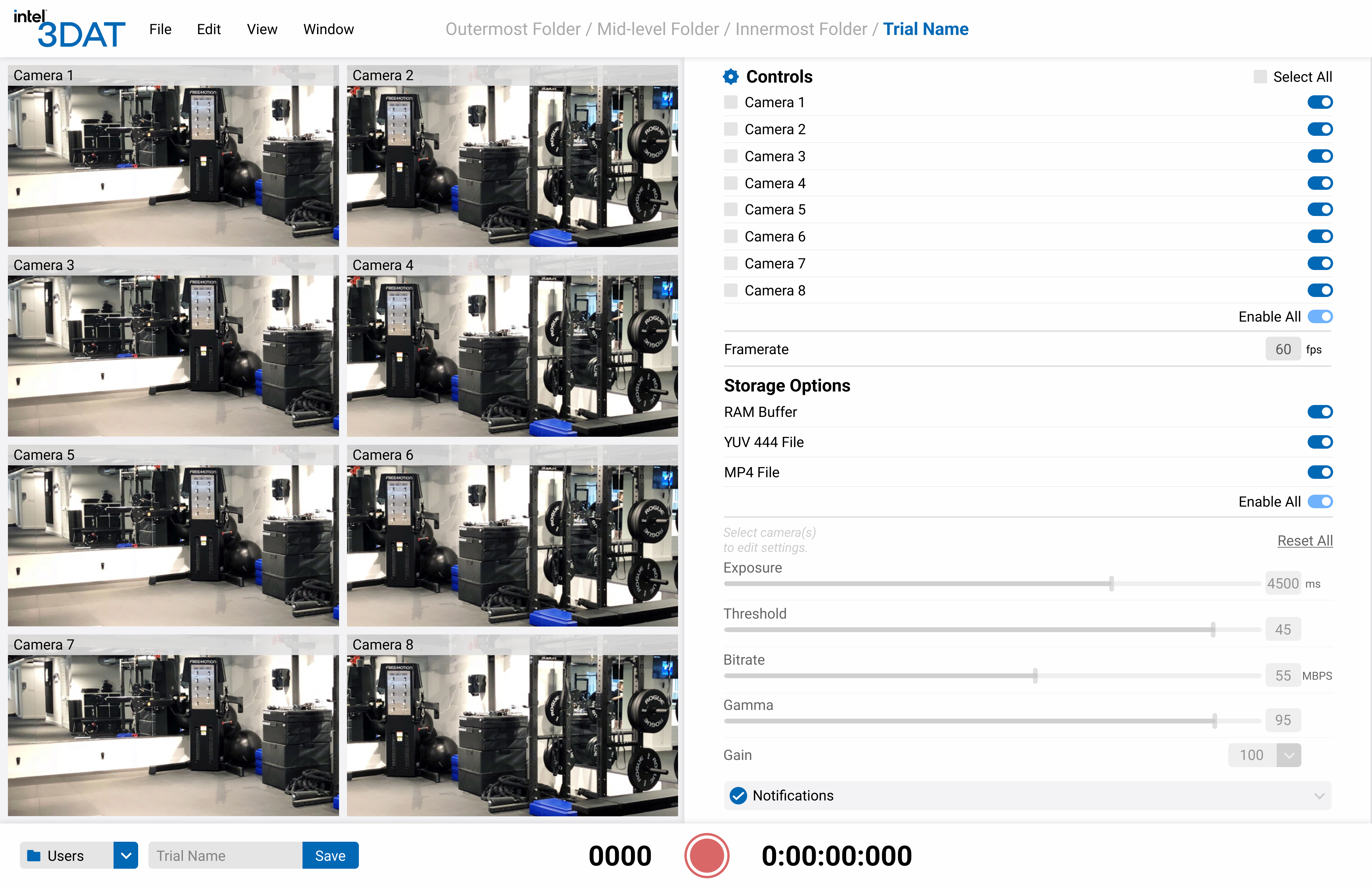
Expanded camera panel.
🏌️ SWING
SWING is a web app powered by 3DAT that takes in videos of athletes taking golf swings and outputs a 3D model of the motions in the video and multiple different visualizations of data collected from these motions. This web app allows the user to scrub through the 3D captured motions and look through multiple interactive charts and tables that provide valuable feedback on their swing form including X-Factor, Sway, Kinetic Chain, snapshots at each phase of the swing, and various other metrics. Additionally, this web app also allows the user to upload multiple videos to compare different golf swings.
Flow overview of SWING from start to finish showing multiple metrics.
🎥 RENDER
RENDER, an adaptation of STREAM, is a multi-camera capture web app with instant playback capabilities. Like STREAM, the app allows users to view live feed from up to eight cameras, toggle activation, edit settings, and get feedback on network connectivity and dropped frames from each camera. In addition to this, however, RENDER also provides instant playback of these videos and live 3D renderings of the subject.
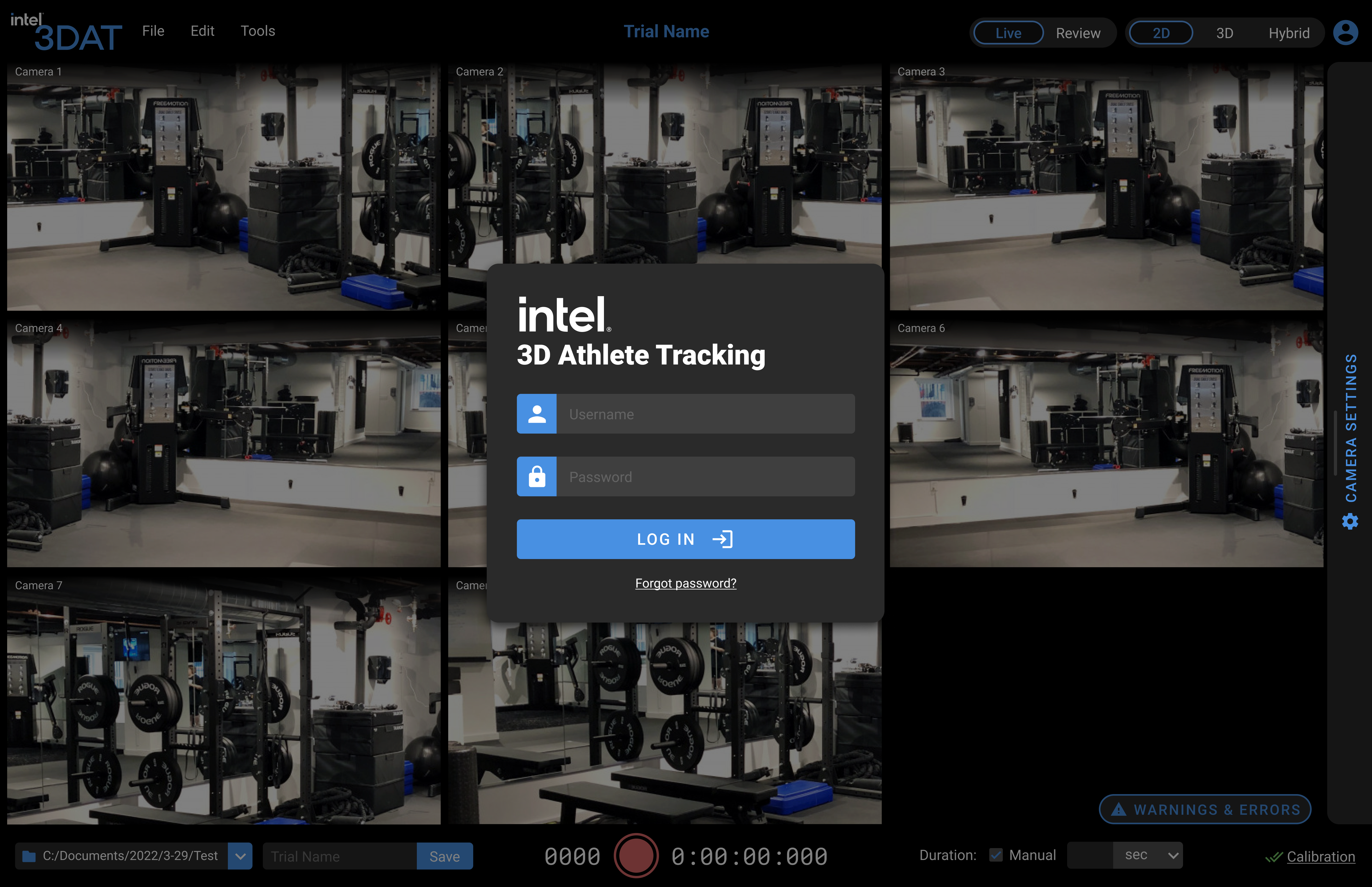
Login modal to launch experience.
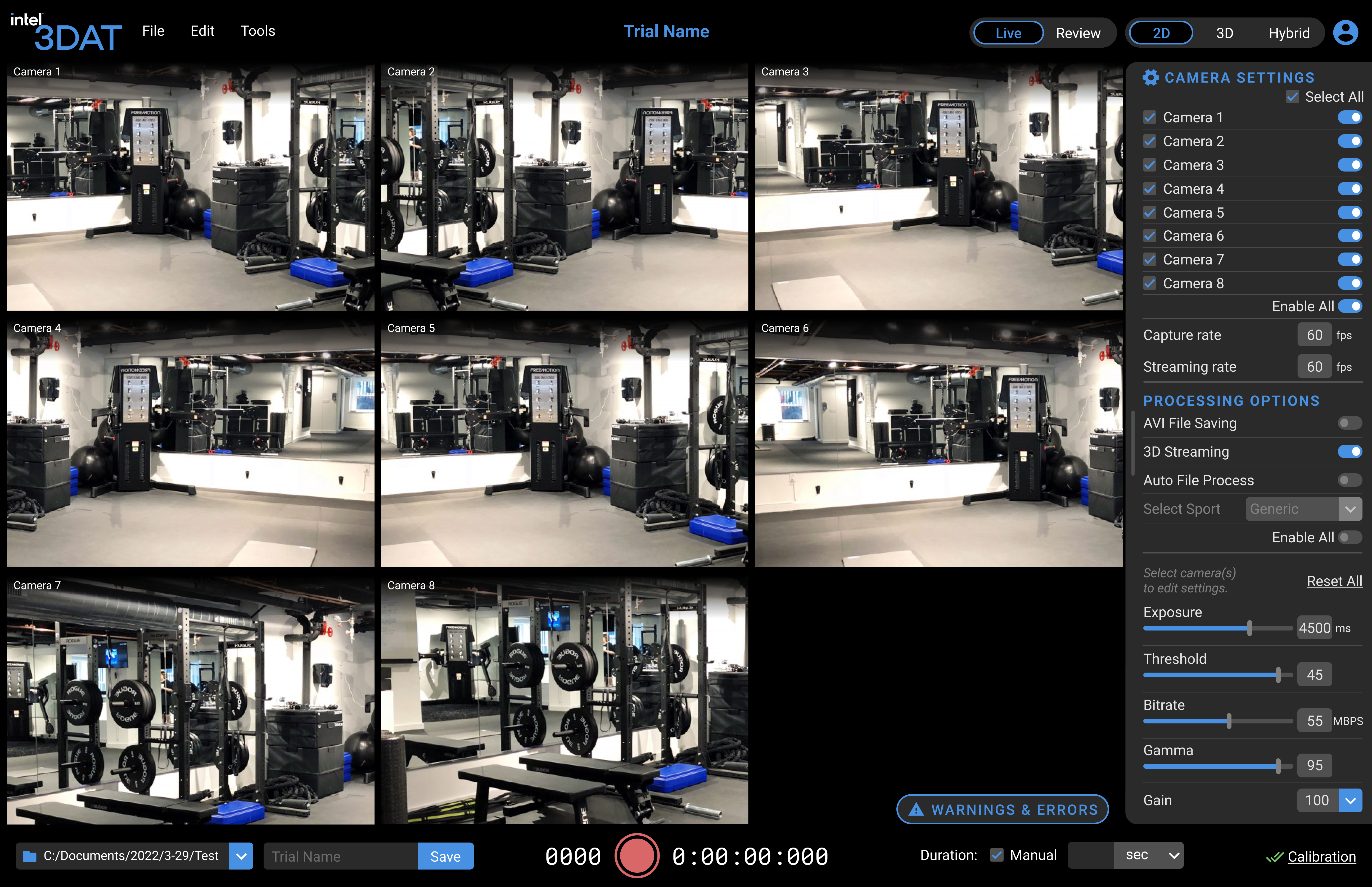
Camera dashboard with all cameras enabled.
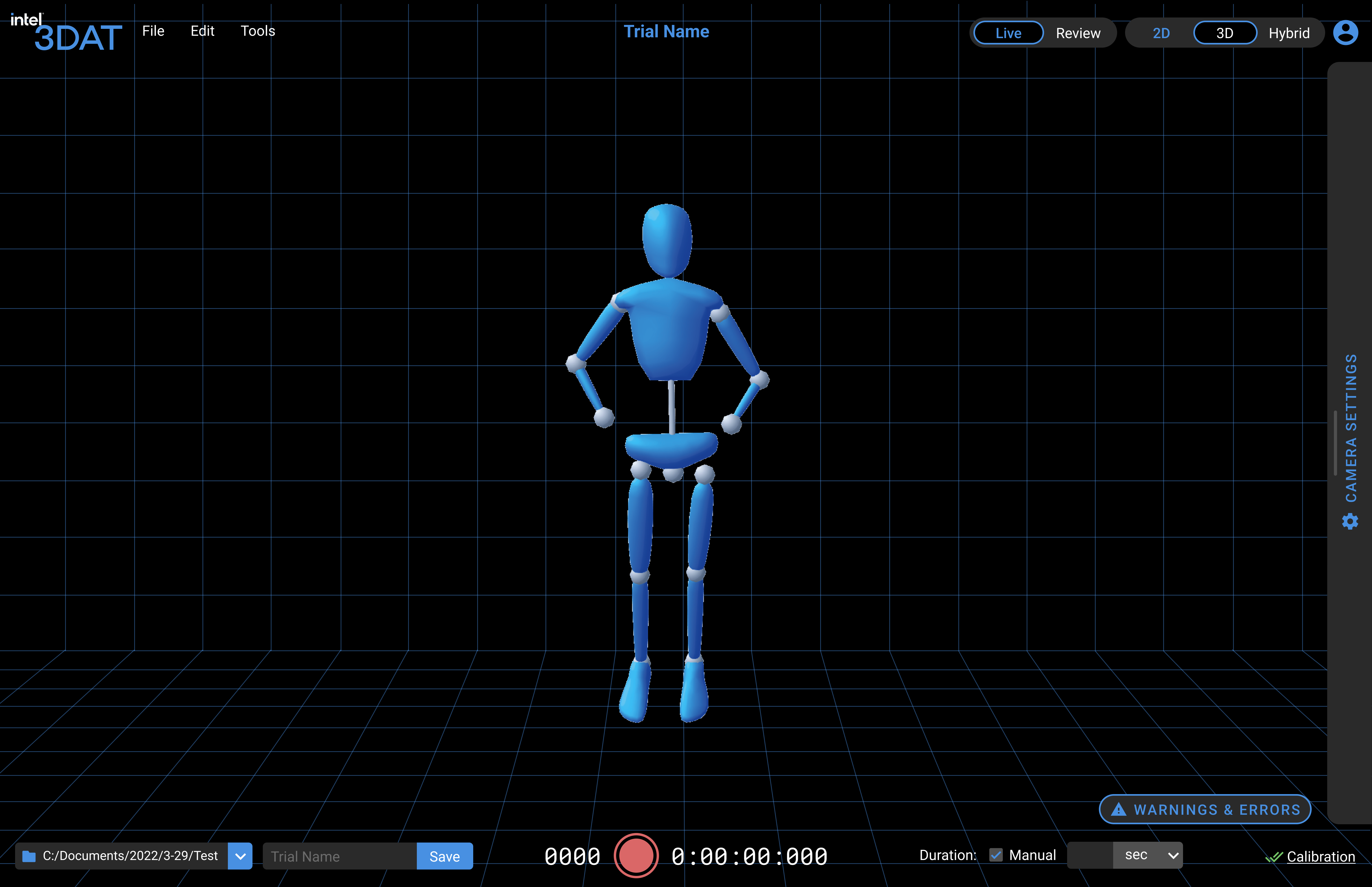
Live 3D rendering of videos with camera panel minimized.
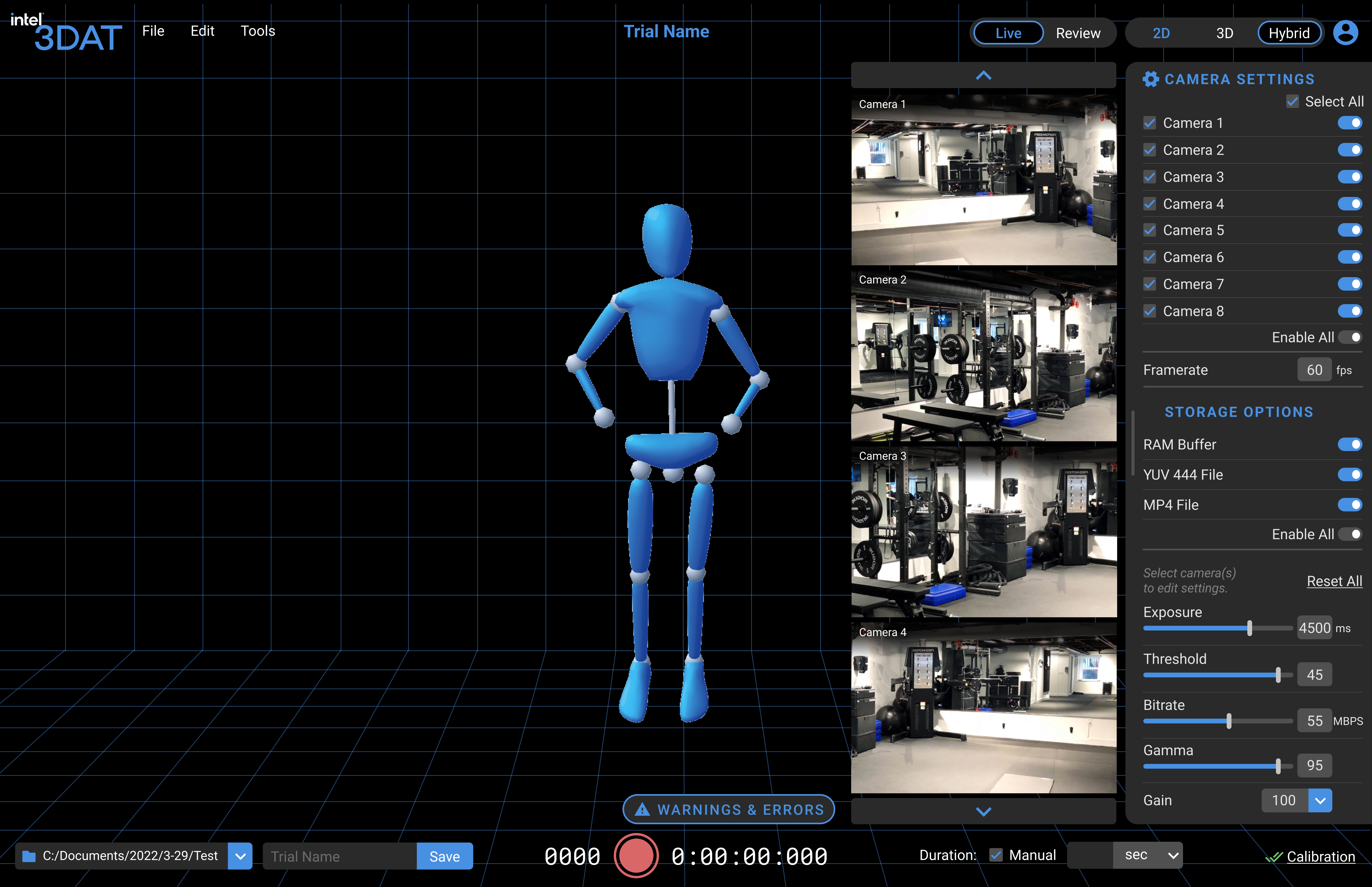
Live hybrid viewing showing raw footage and 3D rendering side by side.
🏃 TREAD
TREAD is a web app that takes in videos of a subject running and outputs an interactive slide-through experience informing users about their running form using data visualization. This app returns data about the runner's pace, foot strike, stride length, cadence, and more to provide valuable insight as to how the user can improve their form for optimal running performance.
Flow overview of TREAD from start to finish.
🤸♀️ ROM
ROM, or Range of Motion, is a web app that both captures and renders videos to provide users with data about their general range of motion. ROM walks users through a set of stretches and movements to be recorded on the user's built-in computer camera and instantly returns multiple valuable data visualizations intended to help the user pinpoint how they can improve their general range of motion.
Flow overview of ROM from start to finish including completing exercises and viewing metrics.
🩺 CareAI Clinician Dashboard
This clinician dashboard web app, the last project that I worked on during my time at Intel, was intended to provide physical therapy clinicians with a convenient means to view data about all of their patients in one portal.
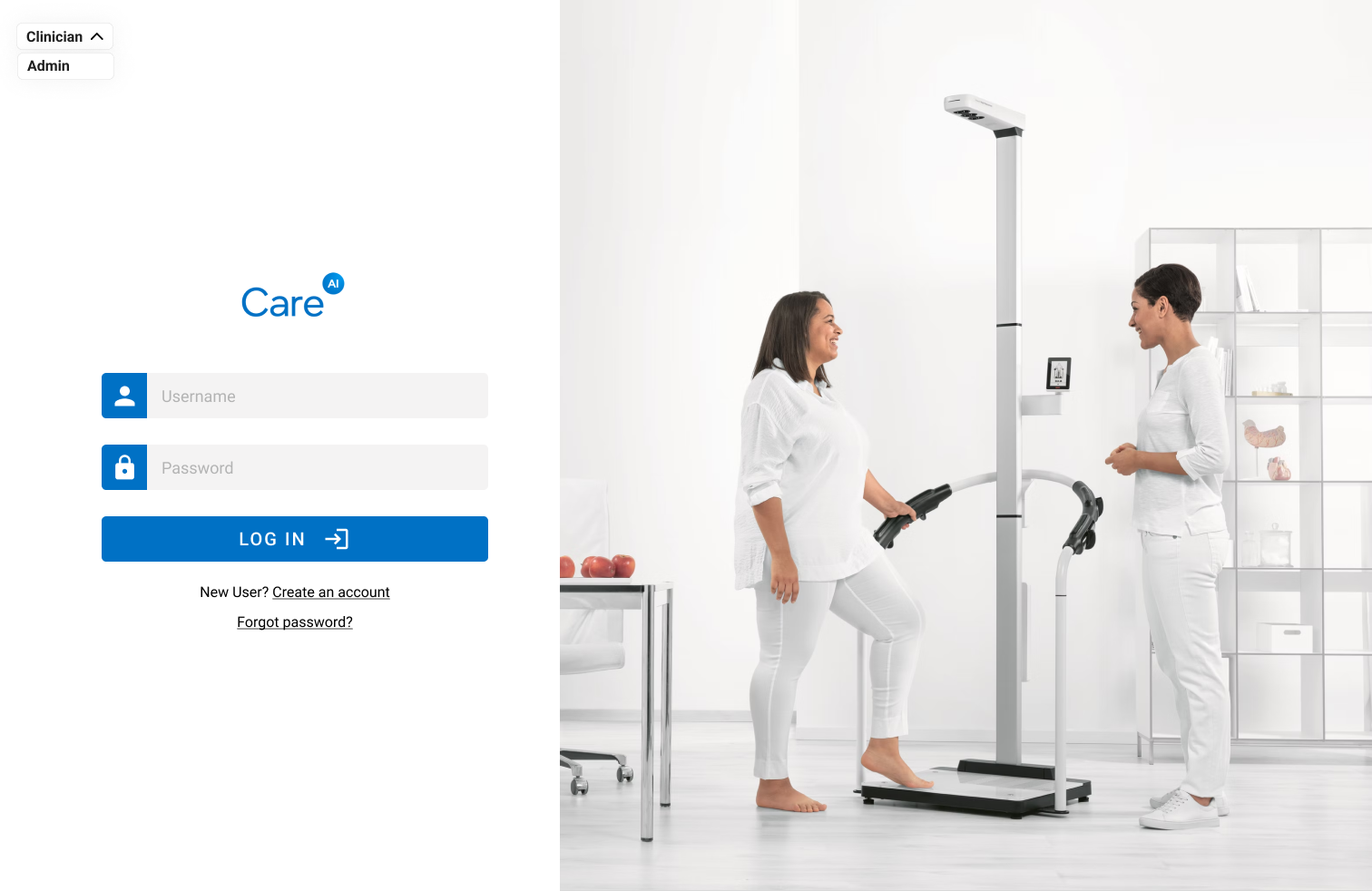
Main login screen of dashboard.
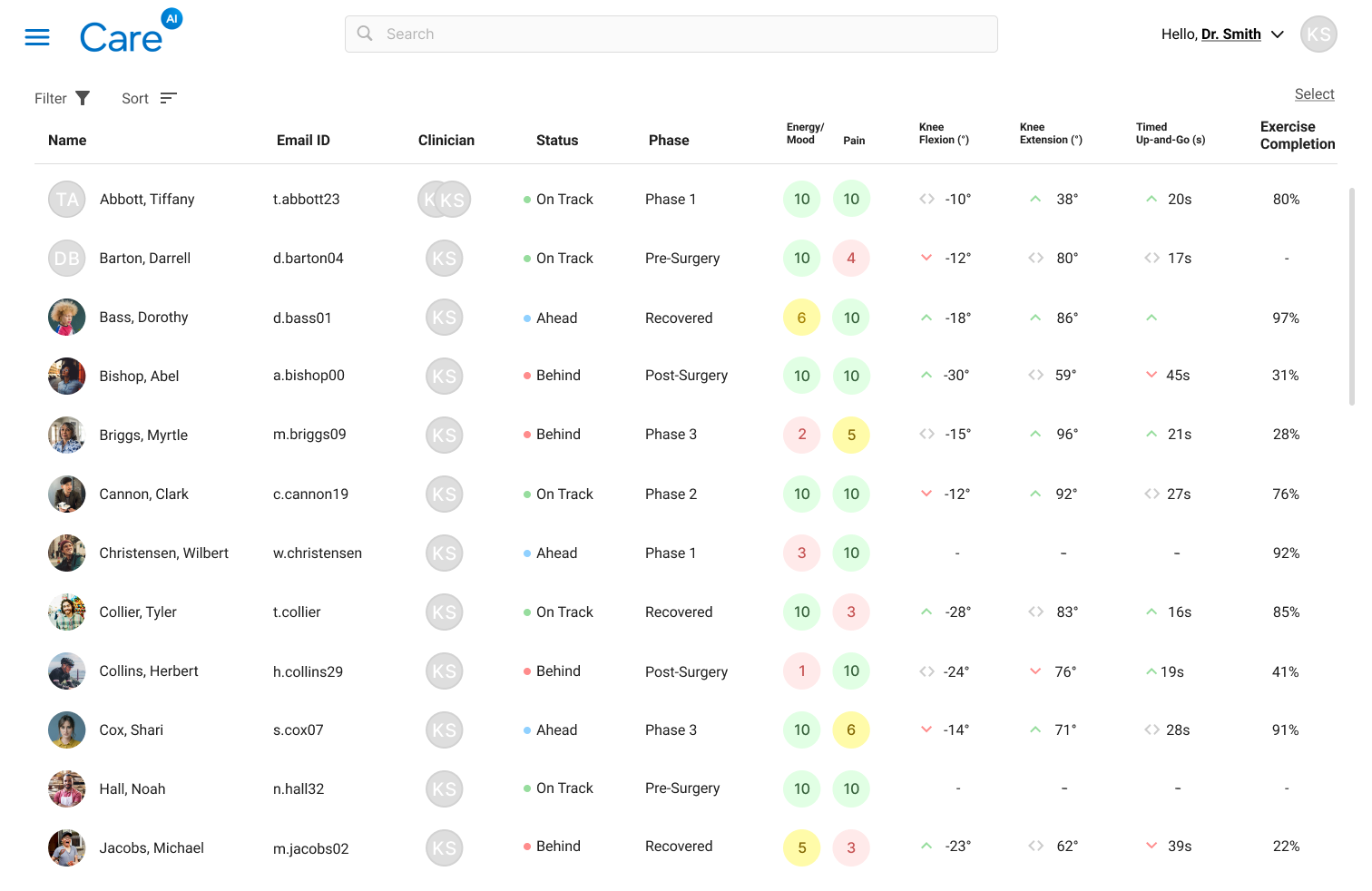
Main view of the clinician dashboard showing an overview of all patients.
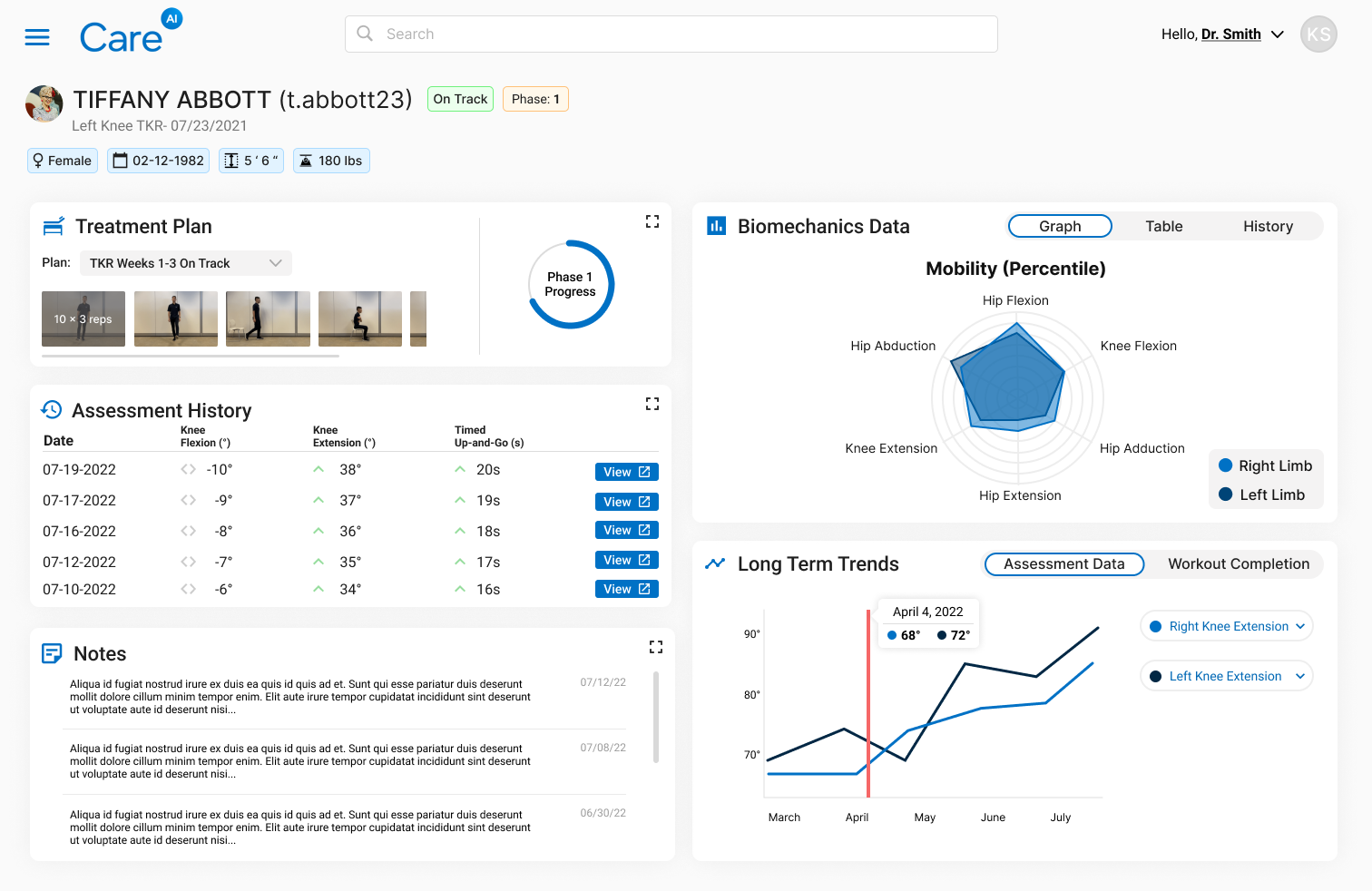
Overview details of a particular patient showing their progress and history.
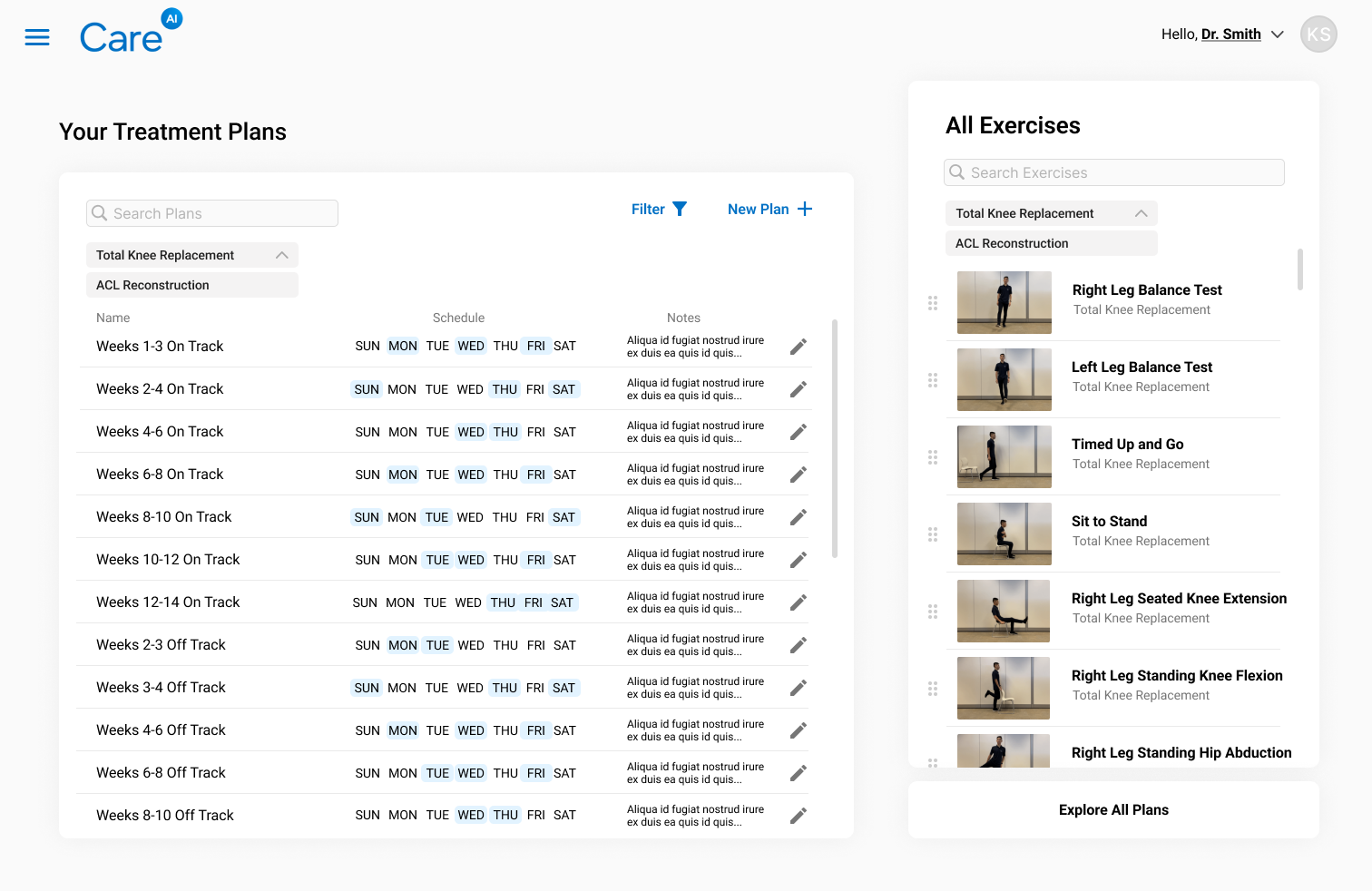
A treatment plan overview for recovery from a particular surgery including exercises and custom plans.
🌎 Impact & Outcome
The six 3DAT applications I designed during my co-op with Intel's Olympics Technology Group garnered significant recognition,
particularly at industry trade shows where they showcased the innovative fusion of technology and athletic performance analysis.
Our applications consistently captured attention from industry professionals, athletic organizations, and potential partners
who witnessed firsthand how Intel's technology could revolutionize training and performance assessment. The intuitive interfaces
I created were instrumental in translating complex biomechanical concepts into accessible, valuable tools for diverse audiences.
My contributions helped establish Intel as a pioneer in sports technology, expanding their reputation beyond traditional computing
into cutting-edge athletic analysis. These applications demonstrated practical implementations of 3DAT that effectively bridged
the gap between complex data collection and actionable athletic insights for both technical and non-technical users. Despite my
seven-month tenure, several of my designs became enduring assets for Intel, continuing to serve as demonstration tools and
reference points for future sports technology initiatives long after my departure. The design systems and visualization approaches
I developed created a foundation that subsequent designers could build upon, extending my impact beyond my time with the team.
This experience profoundly influenced my approach to design challenges. By successfully transforming specialized data into intuitive
visual experiences under tight deadlines, I developed valuable skills in rapid prototyping, cross-functional collaboration, and
technical communication that continue to shape my professional practice today. The ability to make complex information meaningful
and accessible across varying levels of technical proficiency has become a cornerstone of my design philosophy.